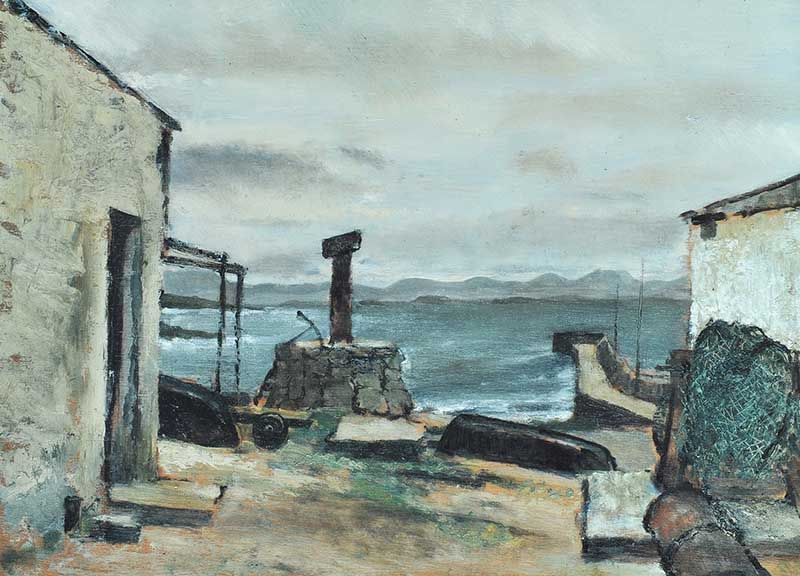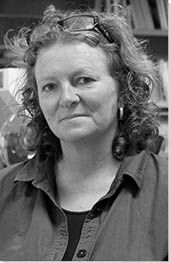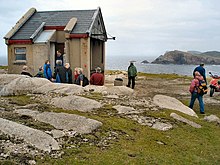
Rehabilitar habilitar una esperanza posibilitar un lugar un encuentro habitar un espacio un tiempo abrir los ojos a media caña respirar oler cada mañana caminar por las nubes regar los cipreses coger un puñado de arena sembrar la tierra con el viento oler oler la vida quedarse inmóvil viendo pasar las nubes... MOLER LA VIDA.
lunes, 23 de diciembre de 2019
martes, 10 de diciembre de 2019
La "cabaña" de hormigón de la escultora británica Rachel Whiteread
'Viajo hacia el interior de los materiales'
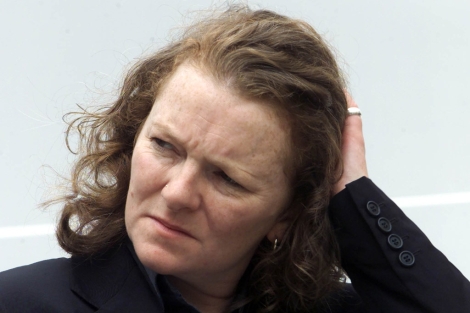
La artista británica Rachel Whiteread. | Reuters
- Desde que murió Lucian Freud, es la artista británica viva más importante
Conxa Rodríguez | Londres
Desde la muerte del pintor Lucian Freud, a Rachel Whiteread la han tasado como la artista británica viva más importante. Y no lo ha hecho su marido, sino el crítico de arte de 'The Guardian'. Es la primera mujer en conseguir el Premio Turner de arte contemporáneo, lo obtuvo en 1993 por 'House', una escultura de hormigón y aluminio que daba la vuelta al revés a una casa victoriana del este de Londres. Fue erigida en un lugar en el que había existido una fila de este tipo de viviendas, pero el ayuntamiento de Tower Hamlets la derribó en 1994, y 'House', que no iba para arte efímero, ya sólo existe en fotografías y en el recuerdo de quienes la admiraron.
Antes de girar al revés una casa, en 1990 Rachel dio la vuelta a una habitación, 'Ghost' (Fantasma), adquirida primero por Charles Saatchi y luego por la National Gallery de Washington, donde se expone de forma permanente. En 'Ghost' la artista convierte el espacio abierto y fantasmagórico de una habitación en un bloque de hormigón cerrado y compacto. ¿Qué habrá dentro? El contorno de la chimenea, de puertas, ventanas e incluso la impresión de la clavija de la luz o de un clavo que pudo sostener un retrato de antepasados o un calendario. Y con ello, las vidas que habitaron el espacio, sus voces y sus silencios. Este es el tipo de trabajo que la dio a conocer como parte del YBA (Young British Artists) aunque ella nunca se columpió en la cuerda de los famosos del grupo. En el año 2000, el monumento al Holocausto erigido en el centro de Viena, una sombría escultura de hormigón en homenaje a 65.000 judíos, la consagró fuera de Gran Bretaña.
Más de 20 años después de 'Ghost' y 'House', Rachel presenta en la galería Gagosian de Londres sus últimos trabajos; barracas volteadas como un calcetín, como las esculturas que la dieron a conocer, y también otros trabajos en los que explora el misterio que encierran los materiales. "Mi trabajo es un viaje hacia el interior de los materiales y de la experimentación con ellos; es un viaje que no tiene fin", cuenta junto a una de las chozas de hormigón que tarda varios meses en fabricar con la ayuda de hasta seis personas. "El molde lo hago yo sola, pero en las fases posteriores necesito ayuda porque acaban pesando varias toneladas".
Junto a las voluminosas esculturas de hormigón y aluminio hay todo un abanico de piezas pequeñas; una caja de bronce que parece de cartón, un bote de cristal que parece de hojalata, una puerta de resina que parece de cristal. No es un engaño, está hecho adrede, según explica la artista: "Lo hago como un juego que es parte de mi trabajo, intento que los objetos parezcan lo que no son porque lo que me interesa es la naturaleza de los materiales que utilizo, ahora, con las puertas de resina lo que más me interesa es la claridad y transparencia del material". Y para ello cada puerta tiene un color como insinuación y diferencia. Estas puertas que por su silueta se notan antiguas datan del siglo XIX y del XVIII, pero la investigación histórica la tiene sin cuidado a esta mujer a quien lo que le interesa es traspasar hasta los poros de la madera centenaria a un nuevo material.
Sobre el origen de las puertas moldeadas dice: "Las sacamos de unas obras de unos conocidos que se arreglaban la casa y entre los desperdicios de la construcción estaban las puertas; yo no investigo ni estudio su origen histórico, todo lo saco del medio que me envuelve y de lo que tengo a mi alrededor". Y de ahí se va hacia la abstracción como en la serie 'Untitled' ('Sin título') de hojas de plata y cartón sobre papel, enmarcadas para colgar en la pared.
El estudio de Rachel es una sinagoga reconvertida en el este de Londres, la ciudad en la que nació en 1963 y en la que ha expuesto su obra en los escaparates más relevantes del arte. En 2005 llenó la sala de turbinas de Tate Modern con esculturas de cajas en un momento de su vida en que vivía rodeada de cajas por un cambio de casa y por haber vaciado la vivienda de su madre tras la muerte de ésta. Fue la tercera artista que ocupó el cuarto pilar de Trafalgar Square con la obra 'Plinth' (Plinto), una estructura cuadrada, vacía y transparente que encajaba simétricamente con el pilar de la céntrica plaza a la que asoma la National Gallery que, como el Prado español, guarda el arte clásico del Estado.
La sutileza de combinar cristal con hojalata, la transparencia de la resina o la unión de bronce con cartón constituyen desafíos paralelos al volteo de chozas en las que trabaja actualmente. "Tengo un encargo de dos piezas grandes para Los Ángeles en la línea de las barracas", explica la artista para quien la diversidad de las dimensiones -de los metros de hormigón a los centímetros de celuloide o un trozo de hueso con capa de plata- resultan un reto. "Los trabajos de pequeñas dimensiones los hago en solitario, me resultan igual de estimulantes, pero no necesito la ayuda de nadie porque los manejo yo sola; los de grandes dimensiones, me resulta más complicado".
See the First Pictures of Rachel Whiteread’s Governor’s Island Installation
It's her first New York installation in 18 years.
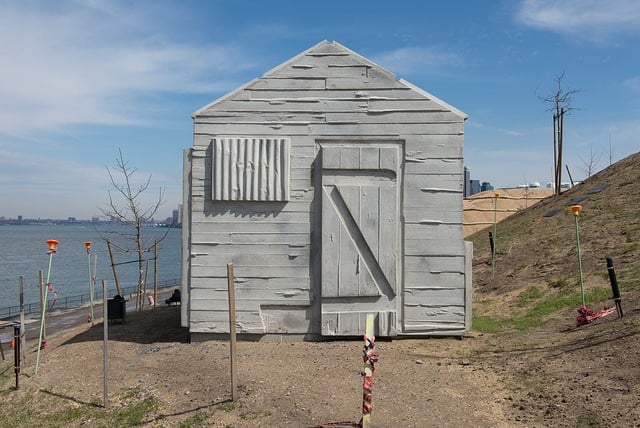 Photo by Tim Schenk
Photo by Tim Schenk
A much anticipated highlight of the soon-to-be-completed new park on Governor’s Island, the Hills, is a permanent, site-specific installation by British art star Rachel Whiteread.
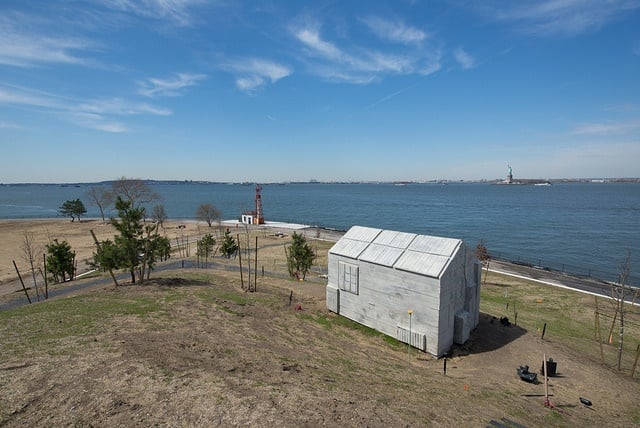 Photo by Timothy Schenck
Photo by Timothy Schenck
Cabin, as the work is known, is a concrete reverse cast of a wooden shed which was installed on the island in 2015 and is set to debut to the public next month when the park opens. The park’s completion date was bumped up from spring 2017.
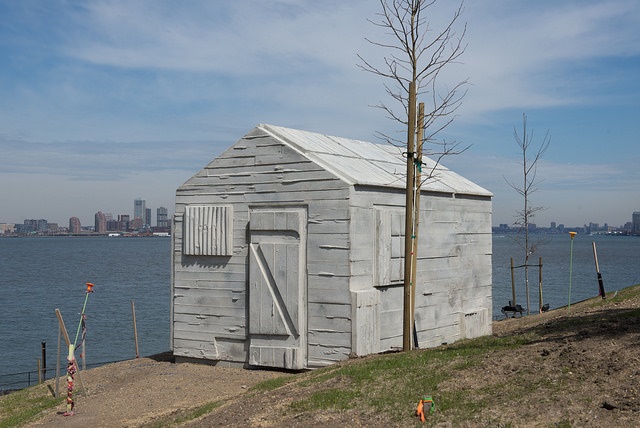 Photo by Timothy Schenck
Photo by Timothy Schenck
Whiteread’s cast sits on Discovery Hill, one of four hills in the park that are described as offering “lush rolling landscapes, grassy overlooks, exhilarating slides, [and] unforgettable views.” The island’s newest park was designed by Dutch architecture firm West 8. Cabin was first announced in April 2014, and was initially set to be installed last summer.
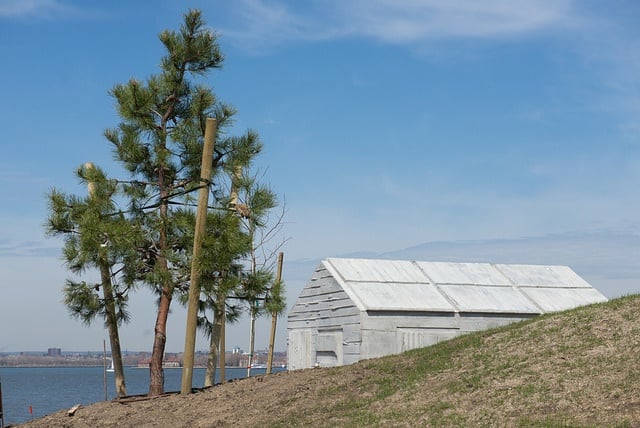 Photo by Timothy Schenck
Photo by Timothy Schenck
Cabin will reportedly be surrounded by bronze casts of actual trash found on Governor’s Island. The work continues Whiteread’s theme of reverse casting large structures and objects, previously seen in what is perhaps her most famous work to date, House (1993), a reverse concrete cast of an entire condemned Victorian house in East London that was demolished after 11 weeks. The work scored Whiteread the Turner Prize that year.
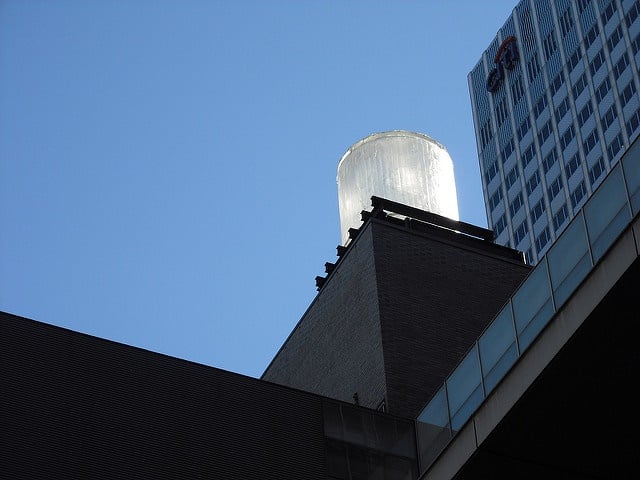 Rachel Whiteread’s Water Tower (1998) at the Museum of Modern Art. Photo: Courtesy of smokeghost via Flickr.
Rachel Whiteread’s Water Tower (1998) at the Museum of Modern Art. Photo: Courtesy of smokeghost via Flickr.
The Governor’s Island installation is Whiteread’s first public art installation in New York since 1998, when Water Tower, a clear, resin cast of a signature Manhattan rooftop water tower was originally placed atop a roof in Soho.
This past fall, Whiteread had concurrent shows at the Bushwick and Chelsea branches of Luhring Augustine Gallery, which represents her.
Art CommisionsGI, which is curated by Tom Eccles, executive director of Bard College’s Center for Curatorial Studies, invites contemporary artists to create site-specific works that respond to the island’s unique vantage point on the New York harbor, including the spectacular view of the Statue of Liberty. In 2014, Mark Handfordth and Susan Philipsz were the first artists to create commissioned work for for the program.
BIOGRAPHY OF RACHEL WHITEREAD
Childhood
Born in Ilford in Essex, Rachel Whiteread moved to London when she was seven. Her mother, the artist Patricia Whiteread, was involved in important exhibitions of feminist art at London's Institute of Contemporary Arts in the 1980s. Consequently, Whiteread and her older twin sisters grew up surrounded by art and materials for art making. Her father Thomas, a geography teacher, supported his wife's artistic career, and converted part of their house into a studio, where Whiteread remembers helping to install a concrete floor as a child. The artist has frequently cited the importance of her upbringing to her later artistic practice, feeling a particular debt to her geographically minded father, "whose interest in industrial archaeology enabled me to look up" and appreciate concepts of architecture, spatiality, and memory.
As a child, Whiteread was sent to a progressive public school, which she remembers as "awful [...] but I kind of loved it; it was a big world soup, fights all the time, influxes of Bangladeshis, Greeks, Turks, Romanians, a really interesting bunch of people all thrown together. I wasn't good at school. I didn't behave or sit down, I mucked about, doing what I could do to get by."
Early Training and Work
After school, Whiteread studied fine art on a foundation course and then painting at Brighton Polytechnic. While she was at Brighton, she studied under British sculptor Richard Wilson, who taught her the casting technique that would be so vital to her later career. She applied for courses in both painting and sculpture at London's Slade School of Fine Art, and chose sculpture, revealing later that "I couldn't make things stay on the wall ... they always ended up on the floor". At the Slade her tutors included Alison Wilding and Phyllida Barlow, two highly revered sculptors working today.
By the time she graduated in 1998, Whiteread had hit upon her signature style, casting the negative spaces inherent in everyday objects. The year after she graduated, Whiteread had her first exhibition at a small London gallery, where she showed just four pieces. These included casts of the interior of a wardrobe and the space underneath a bed, works which marked the beginning of her mature period.
At this time, she was living in East London and her a studio was part of a large complex in Carpenters Road in Stratford. She remembers her time there fondly, but recalls that the area was quite run-down at the time: "There were a few of us: Grayson Perry, Fiona Banner, Fiona Rae, Simon English. It was a sort of silent club: if you could survive Carpenters Road, you could survive anywhere. It was the Badlands."
Although Whiteread knew other artists of her generation, she always felt separate from them due to her lack of interest in being in the media: "People like Grayson Perry, who I shared a studio with back when he was still struggling, great show-offs who want to be in the media all the time... It's not for me."
Mature Period
Whiteread's self-assurance in her own practice (which has changed remarkably little in the last 30 years) is perhaps what helped her to become well known and respected relatively quickly. In 1990, at the age of 27, Whiteread created her early masterpiece Ghost at London's Chisenhale Gallery, and was subsequently nominated for the Turner Prize. In 1992, one of her pieces was selected for the prestigious Documenta IX exhibition. She was also included in exhibitions of work by Young British Artists such as Damien Hirst and Sarah Lucas, even though she was not generally a part of that group.
The following year, Whiteread produced arguably her most important - and certainly most debated - work. Untitled (House) was a cast of an entire Victorian terraced house in London's East End that had been scheduled for demolition. The work, which was shown in situ, caused huge public controversy, and became a symbol of "contemporary art" in the press (for those both for and against it). Some critics loved it, but a petition for its removal received a large number of signatures. Whiteread recalls that it was very unusual for the general press to be interested in contemporary art at the time: "You have to remember, it wasn't like it is now, with art being this rock 'n' roll thing with the media."
Whiteread was awarded the Turner Prize in November 1993 (the first woman ever to achieve this), but the local council ruled that Untitled (House) should be destroyed on the same day. Whiteread was also awarded £40,000 for being the "worst artist of the year" by the K Foundation ¬- a pop music duo whose career had made them enough money to burn - who claimed they would set light to the cash if she didn't accept it. Whiteread found the whole process stressful and ended up accepting it and then giving most of it away. In January 1994, House was destroyed; the contractor chosen to carry out the task claimed "'It's not art, it's a lump of concrete." The art world, however, was outraged, seeing Untitled (House) as an important milestone in contemporary art.
In 1995, Whiteread's work was shown as part of the British Pavilion at the Venice Biennale.
In the same year, she was awarded a commission to produce a memorial to the holocaust in the city of Vienna. As part of the planning and fabrication process, the artist travelled in Germany and Eastern Europe to sites where Nazi atrocities took place and to cemeteries and battlegrounds, deepening her understanding of the issues. Due to the political and sensitive nature of the commission, it took five years to come to fruition, but it also led to a series of public and institutional commissions for Whiteread from around the world.
In 1999, Whiteread and her partner - the sculptor Marcus Taylor - bought a former synagogue in Bethnal Green, London, which had most recently been used as a place for storing textiles. Whiteread spent several months using her casting method to get to know the building and its architectural elements. In the years that followed, the area became fashionable, partly due to the influx of artists and designers during the early 2000s. Whiteread and her partner later moved away, but when asked if she felt guilty about adding to the area's gentrification, she replied: "Guilty! For changing Shoreditch? No. We bought a weird building that had been empty for years, and it took people like us to work out a way of living there."
In 2003, Whiteread was pregnant with her first son, Connor, when her mother unexpectedly died after a routine operation. Whiteread and her sisters waited a year before they felt able to go through their mother's possessions. It was this experience of encountering boxes of objects and images from her childhood that inspired her to make a series of works based on cast boxes, including her huge 2005 Tate Modern installation Embankment.
Current practice
More recently, Whiteread has cut down her studio size and is working with fewer assistants. Consequently, her recent work has been on a smaller scale than the earlier monumental pieces from the 1990s and early 2000s.
In 2007, she gave birth to her second son, Tommy. After this event, Whiteread began to introduce more color into her work, where white, grey and organic colors had previously predominated. Some of these works include translucent resin casts of windows and doors. She has also taken on a number of commissions creating casts of small sheds for locations including London, New York, and Norway.
The Legacy of Rachel Whiteread
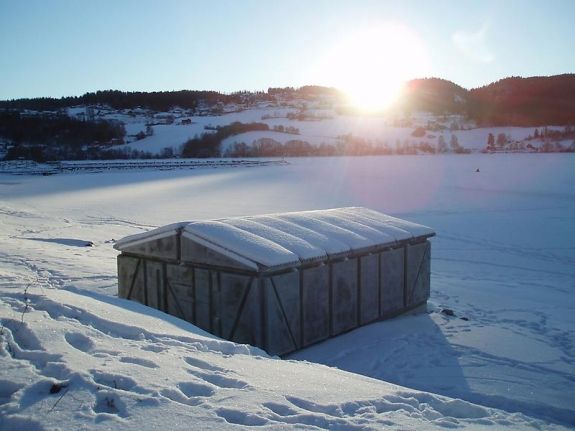
Rachel Whiteread is one of Britain's leading contemporary artists. As the first woman to have won the Turner Prize, Whiteread is an important figure for many contemporary female artists especially in having developed a way of working that is not focused on women's issues or on an explicitly feminist view point - indeed the industrial scale and materials of many of her sculptures takes any consideration of her work beyond any reductionist reading around gender.
Whiteread's remarkably consistent use of the casting method has changed perceptions of how an artist can create variety within their practice; rather than experimenting with different media, she has used the same basic method to push the media of plaster and resin to their limits. In her work she continues to experiment with ideas around space, perception and memory creating, through allusion and suggestion, pieces that have a highly emotional and sometimes political content. Although not an actual part of the group, Whiteread's loose association with the Young British Artists movement also meant that she is part of a key legacy that would influence British art for several years.
Instalación publica
Rachel Whiteread
Nissen Hut
Inauguración el miércoles 10 de octubre de 2018
Dalby Forest, Yorkshire, Inglaterra
www.forestryengland.uk
Dalby Forest, Yorkshire, Inglaterra
www.forestryengland.uk
Esta escultura de Rachel Whiteread es un molde de hormigón de una choza de Nissen, una estructura militar inventada durante la Primera Guerra Mundial, ubicada en medio del bosque de Dalby en Yorkshire, Inglaterra. Co-comisionado por 14-18 NOW y la Comisión Forestal Británica, la escultura es parte de una serie de eventos que marcan el centenario del fin de la Primera Guerra Mundial.
lunes, 9 de diciembre de 2019
Derek Hill, el paisajista inglés y su cabaña irlandesa

Artist Derek Hill Awarded Honorary Irish Citizenship

Arthur Derek Hill, English portrait and landscape painter and longtime resident in Ireland, is awarded honorary Irish citizenship by President Mary McAleese on January 13, 1999.
Hill is born at Southampton, Hampshire on December 6, 1916, the son of a wealthy sugar trader. He first works as a theatre designer in Leningrad in the 1930s and later as an historian. In World War II he registers as a conscientious objector and works on a farm.
Hill’s long association with Ireland begins when he visits Glenveagh Castle in County Donegal to paint the portrait of the Irish American art collector Henry McIlhenny, whose grandfather had emigrated to the United States from the nearby village of Milford, and who subsequently made a fortune from his patent gas meter.
Hill begins to enjoy increased success as a portrait painter from the 1960s. His subjects include many notable composers, musicians, politicians and statesmen, such as broadcaster Gay Byrne, Jerusalem mayor Teddy Kollek and The Prince of Wales. He is also an enthusiastic art collector and traveller, with a wide range of friends such as Bryan Guinness and Isaiah Berlin. Greta Garbo visits Hill in the 1970s, a visit which forms inspiration for Frank McGuinness‘ 2010 play Greta Garbo Came to Donegal.
In 1981, he donates his home, St. Columb’s Rectory, near the village of Churchill, County Donegal, which he had owned since 1954, along with a considerable collection including work by Pablo Picasso, Edgar Degas, Georges Braque, Graham Sutherland, Anna Ticho and Jack Butler Yeats to the State.
An exhibition of his work and personal art collection can be seen at the House and associated Glebe Gallery at Churchill, near Letterkenny. Another collection of his work is held at Mottisfont Abbey. Many of his landscapes portray scenes from Tory Island, where he has a painting hut for years, and starts and then mentors the artists’ community there, teaching the local fishermen how to paint. This leads to the informal but busy “Tory School” of artists such as James Dixon and Anton Meenan, who find that they have the time to paint and use their wild surroundings as a dramatic subject.
Hill is made a CBE in 1997. A Retrospective exhibition is arranged for and by him at the Royal Hibernian Academy in 1998. On January 13, 1999, he is made an honorary Irish citizen by the President of Ireland Mary McAleese.
Arthur Derek Hill dies at the age of 83 at a London hospital on July 30, 2000. He is buried in Hampshire in the South of England with his parents. Memorial services are held for him in Dublin at St. Patrick’s Cathedral, as well as St. James’s Church, Piccadilly, London, and his local Church in Trentagh, County Donegal.
Derek Hill
De Wikipedia, la enciclopedia libre
Arthur Derek Hill , CBE , HRHA (6 de diciembre de 1916 - 30 de julio de 2000) fue un pintor de retratos y paisajistas inglés residente durante mucho tiempo en Irlanda .
Vida temprana
Carrera
Primero trabajó como diseñador de teatro en Leningrado en la década de 1930 y luego como historiador. En la Segunda Guerra Mundial se registró como objetor de conciencia y trabajó en una granja.
Su larga asociación con Irlanda comenzó cuando visitó el castillo de Glenveagh , Condado de Donegal, para pintar el retrato del coleccionista de arte irlandés-estadounidense, Henry McIlhenny , cuyo abuelo había emigrado a los EE. UU. Desde el pueblo cercano de Milford , y que posteriormente hizo una fortuna con su medidor de gas patentado.
Hill comenzó a disfrutar de un mayor éxito como retratista desde la década de 1960; Sus temas incluyen muchos compositores notables , músicos, políticos y estadistas, como el presentador Gay Byrne , el alcalde de Jerusalén Teddy Kollek y El Príncipe de Gales . También fue un entusiasta coleccionista de arte y viajero, con una amplia gama de amigos como Bryan Guinness e Isaiah Berlin . Greta Garbo visitó Hill en la década de 1970, una visita que inspiró la obra de Frank McGuinness de 2010 Greta Garbo llegó a Donegal. En 1981, donó su casa, St. Columb's Rectory, cerca del pueblo de Churchill, Condado de Donegal , que había tenido desde 1954, junto con una colección considerable que incluía obras de Pablo Picasso , Edgar Degas , Georges Braque , Graham Sutherland , Anna Ticho y Jack Butler Yeats al Estado .
Se puede ver una exposición de su obra y colección de arte personal en la Casa y en la Galería Glebe asociada en Churchill , cerca de Letterkenny . Otra colección de su trabajo se lleva a cabo en Mottisfont Abbey . Muchos de sus paisajes retratan escenas de Tory Island , donde tuvo una cabaña de pintura durante años, y comenzó y luego fue mentor de la comunidad de artistas allí, enseñando a los pescadores locales a pintar. Esto llevó a la informal pero ocupada "Escuela Tory" de artistas como James Dixon y Anton Meenan, quienes descubrieron que tenían tiempo para pintar y su entorno salvaje como un tema dramático.
Hill fue nombrado CBE en 1997. Una exposición retrospectiva fue organizada por él y en la Royal Hibernian Academy en 1998. En 1999, el presidente irlandés Mary McAleese lo convirtió en ciudadano irlandés honorario .
Murió en un hospital de Londres el 30 de julio de 2000, tenía 83 años y está enterrado en Hampshire, en el sur de Inglaterra, con sus padres. Se celebraron servicios conmemorativos para él en Dublín en la Catedral de San Patricio , así como en la Iglesia de San Jaime, Piccadilly , Londres, y su iglesia local en Trentagh, Condado de Donegal.
Biografías
En 1987, Quartet publicó el ensayo ilustrado de Gray Gowrie sobre Hill. Gowrie consideraba que sus paisajes eran tan buenos como los de Jack Yeats . [1] Una biografía más completa de Hill por Bruce Arnold fue publicada en 2010. [2]
- Bruce Arnold: Derek Hill , Londres: Cuarteto, 2010, ISBN 978-0-7043-7171-2
Roma y la beca de la Fundación Derek Hill
Derek Hill tenía un gran amor por Roma y fue Director de Bellas Artes en la Escuela Británica de Roma (BSR) durante unos cinco años durante la década de 1950. [3] Durante sus dos ocupaciones dinámicas, alentó a los académicos de arte residentes, que incluían a Anthony Fry y John Bratby , a viajar por toda Italia, mientras que, en la academia, Hill fomentó una atmósfera jovial y creativa. [4] En 1989, poco antes de la muerte de Hill, estableció un fideicomiso caritativo que proporciona becas anuales para la Beca de la Fundación Derek Hillresidencias en el BSR. La beca se otorga a través de una selección abierta y competitiva de artistas británicos e irlandeses en los campos de dibujo y pintura, proporcionando un estipendio y tres meses de pensión completa en uno de los estudios de Edwin Austin Abbey . [5] Los ganadores del premio han incluido a Emma Stibbon RA [6] y David O'Kane . [7]
Enlaces externos
- 73 pinturas de Derek Hill o posteriores en el sitio de Art UK
- Derek Hill en línea (ArtCyclopedia)
- Obituario de Derek Hill (Guardian, 10 de agosto de 2000)
- Biografía (bellas artes de Ross)
- Arreglos funerarios realizados para el artista Derek Hill ( artículo de RTÉ News , 31 de julio de 2000)
- St. Columba House (El hogar de Derek Hill)
Notas al pie
- ^ "Copia archivada" . Archivado desde el original el 23 de julio de 2011 . Consultado el 11 de agosto de 2010 .
- ^ "Donegal Democrat" en el lanzamiento del libro 2010 Archivado el 29 de julio de 2012 en Archive.today
- ^ "Gowrie, G., 2000. Derek Hill. The Guardian (consultado el 6 de marzo de 2013)" .
- ^ Ruthen, A. (Lord Guthrie)., 1987. Derek Hill: una apreciación, Quartet Books.
- ^ Macmillan, P., 2007. The Grants Register: The Complete Guide to Postgraduate Funding Worldwide, Palgrave Macmillan.
- ^ "Real Academia, biografía de Emma Stibbon CV" .
- ^ "Perfil de Arfacts.net de David O'Kane" .
Derek Hill by Bruce Arnold
Adopted son but Hill's Irish roots run deep
A beautiful book which reveals the key role Ireland played in the life of English artist Derek Hill, says Charles Lysaght
 HIGH POINT: Derek Hill, whose work was shunned by Britain's artistic establishment, found fulfilment in Ireland. In this photograph, taken in 1999, he is outside his hut on Tory Island, where he lived and worked for many years. Bruce Arnold says Hill was captivated by 'the green depths of Irish scenery'
HIGH POINT: Derek Hill, whose work was shunned by Britain's artistic establishment, found fulfilment in Ireland. In this photograph, taken in 1999, he is outside his hut on Tory Island, where he lived and worked for many years. Bruce Arnold says Hill was captivated by 'the green depths of Irish scenery'
Adopted son but Hill's Irish roots run deep
A beautiful book which reveals the key role Ireland played in the life of English artist Derek Hill, says Charles Lysaght

When Derek Hill, the English artist, was granted honorary citizenship in 1998, President McAleese told him that he had become "more Irish than the Irish". We think of that as a compliment, and it was certainly so intended by our kind-hearted President.
In fact, Derek Hill, like his insightful sympathetic biographer Bruce Arnold, never aspired to be Irish.
"We persisted," Arnold writes, "in retaining English social and loyalty convictions, in firmly rejecting the Irish belief that sympathetic English residents could be made 'more Irish than the Irish', yet managing to get close to the heart of the country and its people in a variety of different ways."
From the age of 38, Hill made Ireland the centre of his artistic life and appreciated what made it different. I see him as akin to Robin Flower and George Thomson, two Englishmen, who, in the early 20th Century, rescued
from historical oblivion the Irish-speaking culture of the Blaskets.
Hill's Ireland was further north along the wild Atlantic coast, in north-west Donegal and Tory Island. He was, according to Arnold, captivated by "the green depths of Irish scenery, the expansive and ever-changing skies, the light over the Atlantic and the dark shadows of cliffs and ravines around the coast".
In 1955 he acquired a former rectory near the village of Churchill on the edge of Lough Gartan, where he spent months every year. He made regular trips to Tory, where he had a hut, and painted some of his best landscapes. He counted those times as the happiest of his life.
"It gave me," he said, "a wonderful chance to get away and be myself and just paint."
He struck up friendships with some islanders and encouraged the emergence of a school of artists among them. His one false step was to buy potatoes one year to replace their lost crop. Pride was offended.
On the mainland, Hill made himself part of his local community, even attending ceili dances, and enjoyed a warm relationship with neighbours and employees. Portraits of some of them are among his best.
A food-loving bachelor of independent means, probably homosexual in orientation, his cook and housekeeper for 35 years, Gracie McDermott (nee McDaid) became the anchor of his Irish life and probably his most trusted friend. Their relationship is a touching tale.
Through his friendship with Alfred and Clementine Beit, Hill became a member of the council of the Wexford Opera Festival, which he attended regularly for 40 years and endowed generously.
Outside this Irish life, there was a lot of emptiness and disappointment. The British artistic establishment and critics dismissed Hill's landscapes as out of date because they were too representational. Their galleries refused to buy his portraits, although the best of them (nearly all of men) are truly memorable.
He prided himself on establishing a rapport with his sitters and laying bare their character and mind. His depiction of John Charles McQuaid as a cross between a Renaissance prelate and a crafty Cavanman, which hangs in St Vincent's Hospital, is a fine example.
Born into the 19th-Century industrial plutocracy, Hill spent much of his life cultivating the more ancient aristocracy, including the royal family, especially those with an artistic bent.
His friendship with one royal, whose portrait he painted, almost cost Hill his life. He was a house guest at Earl Mountbatten's Sligo abode on the August weekend when Mountbatten was blown up in his boat. Hill would almost certainly have been on the boat had he not left to go to Ballyshannon to receive a poetry prize.
A mighty traveller, Hill spent a lot of time keeping in touch with people. Sadly, few of what Arnold describes as "his wonderful letters and even better postcards" seem to have survived to assist in bringing these friendships to life.
Affable and kindly, Hill was also petulant, demanding, and rather childish. Sociability did not make up for a lack of intimacy. Arnold thinks that he was a lonely man.
This beautiful book contains handsome reproductions of Hill's paintings that will enable the reader to appreciate his life's work. It is splendid that he found fulfilment in Ireland and that his home in Donegal, which he gifted to the nation, goes on as an art gallery to provide inspiration for the people among whom he did his best work.
Sunday Independent
Arthur Derek Hill nació en Southampton en 1916 en una familia acomodada.
Tenía dos hermanos mayores y, al igual que ellos, asistió al Marlborough College, donde demostró interés y talento para la pintura. Su padre lo persuadió para estudiar diseño de escenarios en lugar de pintar, ya que eso tenía mayores posibilidades de empleo. En consecuencia, se matriculó para estudiar diseño de escenarios en Munich a la edad de 17 años.
Más tarde estudió con Paul Colin en París y con el Dr. Josef Gregor en Viena. El Dr. Gregor le presentó a Tairov, el director del Teatro Mamemney en Moscú, donde pasó seis meses en 1936. Después de trabajar en Moscú, se tomó un tiempo para viajar al este a través del Trans Siberian Express a Japón, China, Bali y Siam.
A partir de 1947, Hill pasó mucho tiempo en Italia.
Conoció al historiador de arte Bernard Berenson, que admiraba su trabajo y se convirtió en una figura paterna para él después de la muerte de sus propios padres. Pasó muchos inviernos en la casa de Berenson, la finca I Tati, a las afueras de Florencia.
Durante su tiempo en Italia conoció a muchos artistas italianos, entre ellos Antonio Music, Renato Guttuso, Bruno Saetti y Giorgio Morandi. También conoció al estadounidense Henry McIlhenney, que trabajaba en la Academia Americana en Roma. McIlhenney era dueño del castillo Glenveagh en Donegal en ese momento e invitó a Hill a visitarlo allí en 1949. Hill regresó una y otra vez a Donegal y en 1953 compró la casa de la antigua rectoría de St Columb, ahora Glebe House, y se mudó al año siguiente.
Glebe House fue el hogar principal de Hill desde 1954 hasta 1981, aunque continuó viajando mucho durante esos años.
Fue nombrado Director de Arte en la Escuela Británica de Roma, donde conoció a artistas como John Bratby y Joe Tillson, así como a los más famosos Francis Bacon, Henry Inlander, John Craxton y Keith Vaughan.
En 1958, Derek Hill visitó la Isla Tory por primera vez y quedó fascinado por la luz y el paisaje accidentado. Alquiló una cabaña allí y pasó muchas semanas pintando cada verano. Su ejemplo y estímulo condujo al desarrollo de toda una escuela de pintura ingenua, los pintores de Tory Island, de los cuales el artista más conocido es James Dixon.
La carrera de Hill como pintor, particularmente de retratos, floreció y se le encargó pintar a muchas personas famosas, algunas de las cuales visitaron St Columb's. Sus retratos incluyen los de Yehudi Menuhin, Arthur Rubenstein, Sir Michael Tippett, Wilfred Thesinger, Erskine Childers, Garrett Fitzgerald, Tony O'Reilly, Prince Charles, Lord Mountbatten, Laurens van der Post, Arzobispo McQuaid y Cardinal Heard. Su retrato de Anthony Eden está en la colección de la National Portrait Gallery de Londres.
En 1982, Hill dio su hogar aquí en Lough Gartan y su contenido al pueblo irlandés. Compró una cabaña cerca pero trasladó su base a una casa familiar en Hampstead en Londres. Continuó pasando tiempo en el área de Gartan y en la isla Tory hasta su muerte en Londres en julio de 2000.
En 1937, Hill regresó a Inglaterra para trabajar como diseñador de vestuario en Sadlers Wells, pero al poco tiempo regresó a París. Animado por Edward Molyneux, modisto y coleccionista de arte impresionista, alquiló un antiguo molino en el Loira y comenzó a pintar en serio. Cuando estalló la guerra, regresó a Wiltshire en Inglaterra como objetor de conciencia y trabajó como trabajador agrícola. Todavía pintaba en su tiempo libre y conoció a muchos artistas, incluidos Mary Kessell y Victor Pasmore.
En 1943, a la edad de 27 años, Hill hizo una exposición individual en Londres en la Galería Nicholson y también organizó exposiciones del trabajo de otros artistas, incluido Degas. En 1946 Hill pasó un año pintando en Irlanda. Tuvo relaciones en Co Wicklow, pero principalmente pintó en Galway, Mayo y Achill Island, donde pintó con el artista irlandés Louis LeBroquey.
